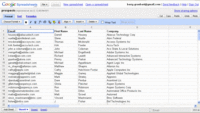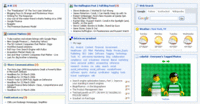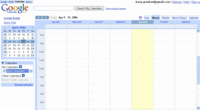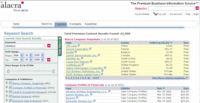Web 2.0 leads Gartner 2006 Hype Cycle
![]() Gartner, today, released its 2006 Emerging Technologies Hype Cycle Report. The annual report which shows where Gartner analysts (if not their clients) will be focused for the coming year, listed Web 2.0, Real World Web and Applications Architecture as the three big emerging technologies.
Gartner, today, released its 2006 Emerging Technologies Hype Cycle Report. The annual report which shows where Gartner analysts (if not their clients) will be focused for the coming year, listed Web 2.0, Real World Web and Applications Architecture as the three big emerging technologies.
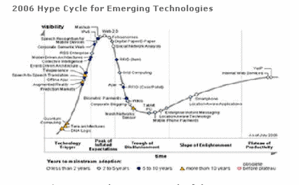 Within Web 2.0, Gartner focuses on four trends and technologies:
Within Web 2.0, Gartner focuses on four trends and technologies:
- Social Network Analysis, basically the enterprise business intelligence view into all the nuggets of information generated through social networks. There are clear opportunities here for market research, competitive intelligence and trend identification.
- Ajax: the processes used to develop functional applications within the browser
- Collective Intelligence: the development of content, metadata, software and other services by a large group of people without any centralized authority.
- Mashups: the integration of multiple web services to create new services.
Of these four, Gartner views Collective Intelligence as having the highest potential impact, as a “transformational technology” in Gartner terminology, but with mainstream adoption 5-10 years down the road. Social Network Analysis and Ajax are both considered high impact, with a much shorter time horizon – less than two years. Mashups have only moderate impact (which they already have achieved IMO), again with a less-than two-year horizon.
The challenge for many organizations is that to fully embrace Web 2.0 often means a major change in your business model. While it’s easy to begin using Ajax, it’s much harder to shift from a centralized, controlled environment to an open source or collective intelligence approach. While the early success stories for Collective Intelligence have occurred in the consumer space (think MySpace or YouTube), innovative companies will identify ways to harness this in the enterprise environment.
The key for content providers today is to begin to use these tools and make them a part of their daily routine. Create a development sandbox and see how your users begin to interact with these technologies. Over time, as these technologies move towards mainstream adoption, you’ll be well-positioned to take advantage of them.
For more insights on the Gartner report and Web 2.0, read posts by Dion Hinchcliffe, Paul Kedrosky and Peter Rip.




